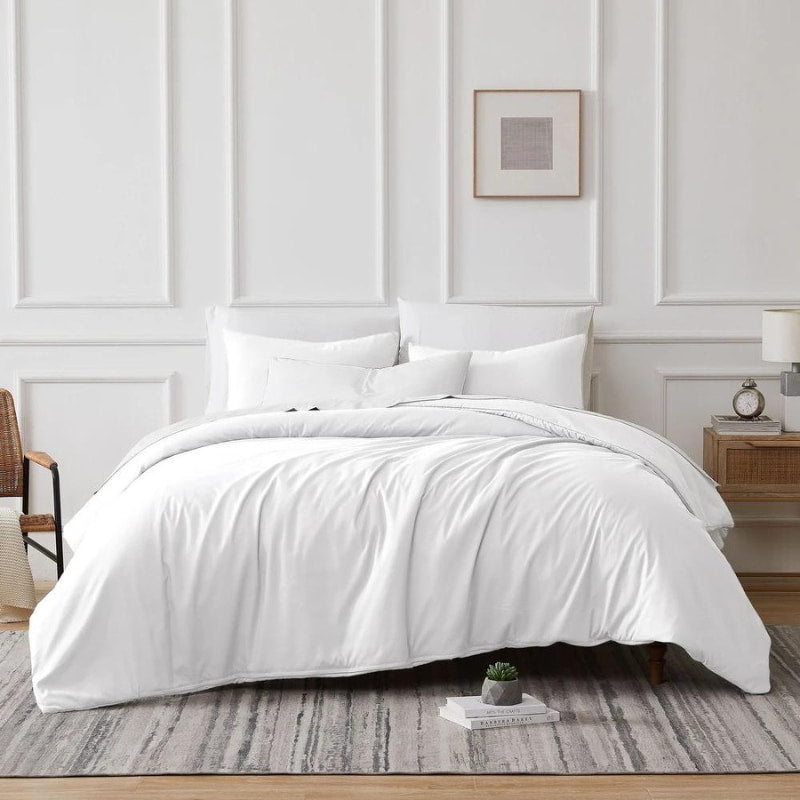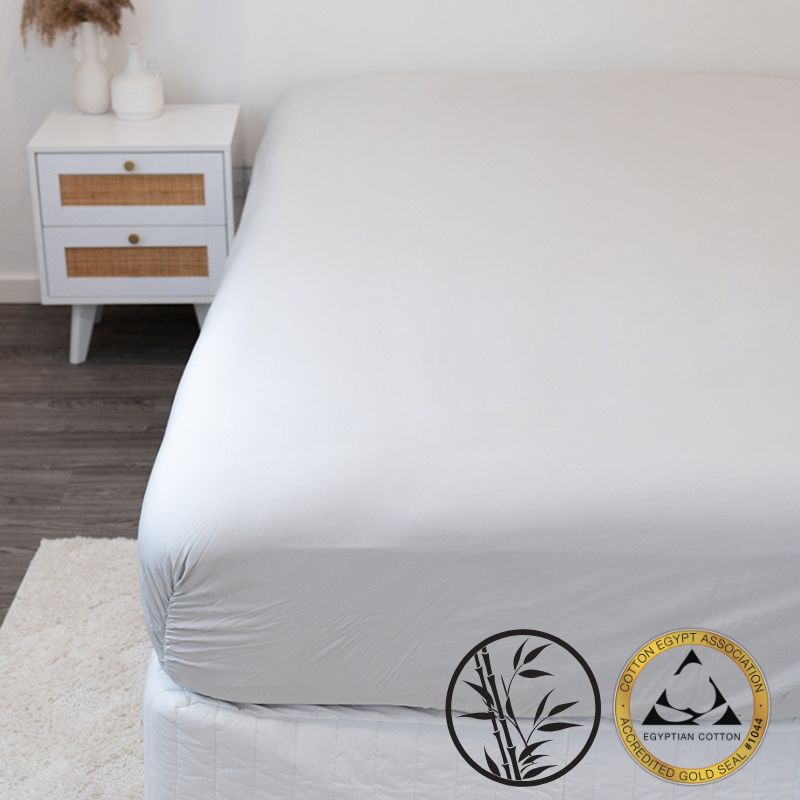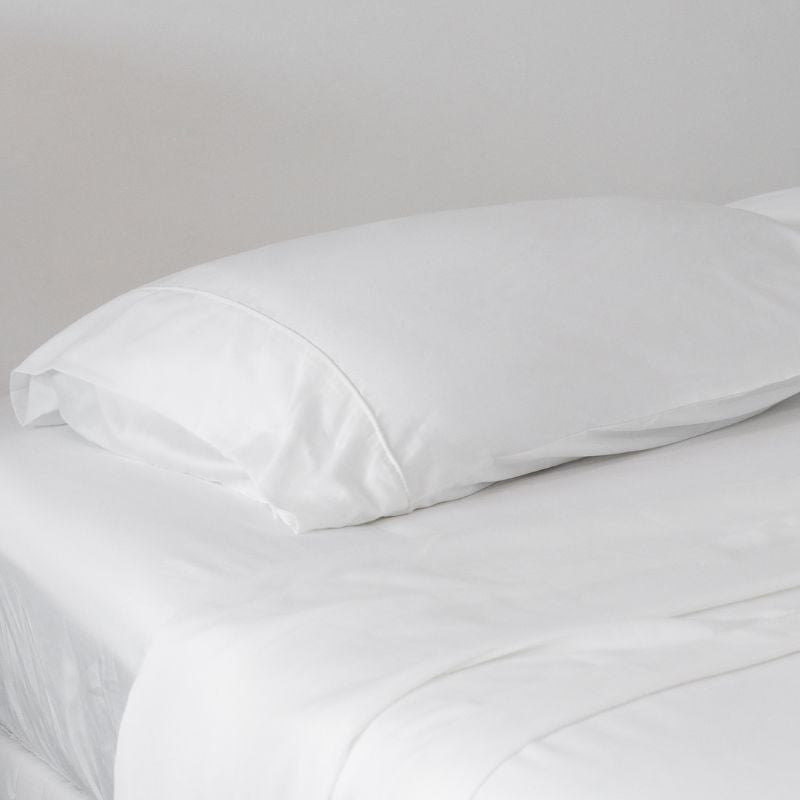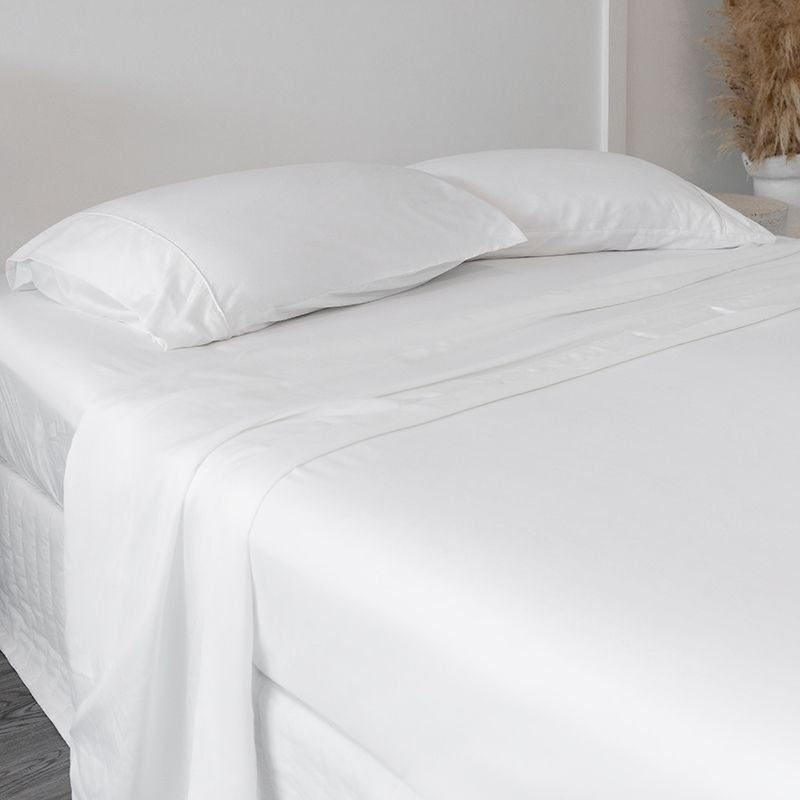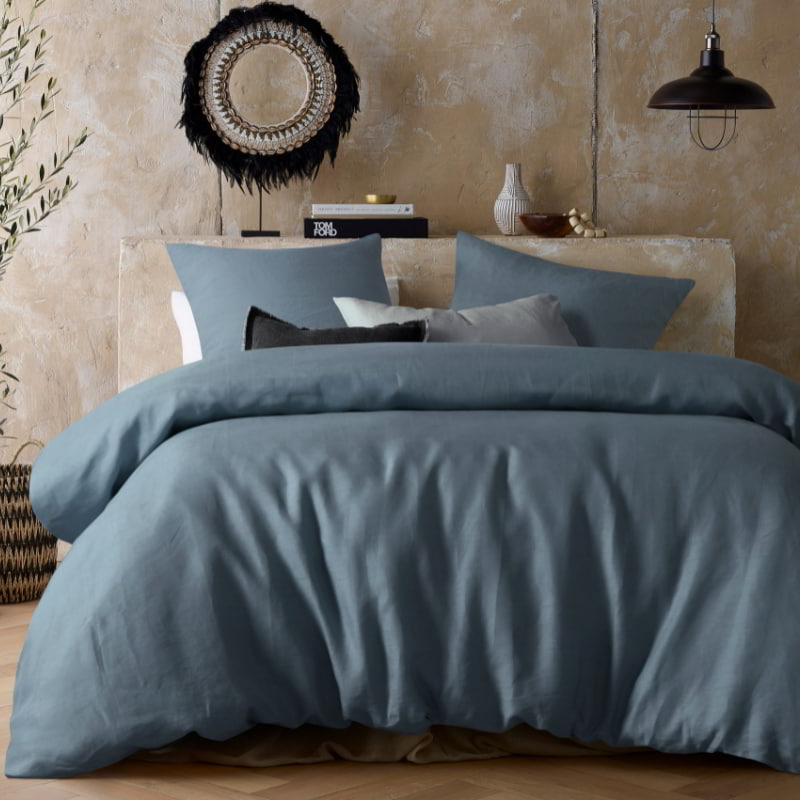To give your bedroom a fresh start this spring, begin by decluttering—sort items into keep, donate, or discard piles. Next, wash and store your winter bedding, replacing it with lighter, breathable fabrics. Thoroughly vacuum and deodorise your mattress to maintain a clean sleep environment. Dust and clean all surfaces, including shelves and nightstands. Finally, organise your wardrobe by season and store off-season items properly. Following these steps will help you create a refreshed, organised bedroom ready for the new season.
Spring is here, and with it comes the perfect opportunity to refresh your most personal space—your bedroom. But did you know that a clean and organised bedroom isn't just about aesthetics?
It can significantly improve your sleep quality and overall well-being. In this guide, we'll walk you through the essential steps to spring cleaning your bedroom. From decluttering and deep cleaning to organising and maintaining a fresh environment, we’ll cover everything you need to create a peaceful, rejuvenating space that supports restful sleep year-round.
Decluttering Your Space
Why Decluttering is the First Step
Benefits of Reducing Clutter
Decluttering your bedroom is more than just tidying up; it’s about creating a space that fosters mental clarity and reduces stress. A clutter-free environment can help lower anxiety, improve focus, and even reduce allergens, making your bedroom a healthier place to rest.
Tips for Effective Decluttering
Start by sorting your belongings into categories: keep, donate, and discard. Focus on one area at a time, such as your wardrobe or nightstand, to avoid feeling overwhelmed. Use storage solutions like bins or baskets to keep items organised and maintain a clutter-free space in the long run. Consider donating items you no longer need to make space for what truly matters.
Deep Cleaning Bedding and Linens
Freshen Up Your Bedding for Spring
How to Properly Wash and Store Winter Bedding
As the weather warms, it's essential to properly clean and store your winter bedding to keep it in top condition for next season. Start by carefully reading the care labels on your blankets, comforters, and heavy quilts.
Most winter bedding can be machine washed on a gentle cycle with cold water, but larger or delicate items might require professional cleaning. Use a mild detergent to preserve the fabric's integrity and prevent the buildup of harsh chemicals.
For down quilts that can be washed in the washed consider adding a few clean tennis balls to the dryer to help maintain fluffiness and even distribution of the fill.
Once washed, ensure your bedding is completely dry before storage to prevent mould or mildew. Air-drying in a well-ventilated area is ideal, but if using a dryer, select a low heat setting.
Store your winter bedding in breathable cotton bags or bins in a cool, dry place to avoid musty odours. Avoid plastic bags, as they can trap moisture and lead to damage. By taking these steps, you’ll keep your winter bedding fresh and ready for when the cold weather returns.
Choosing Lighter, Breathable Fabrics for Spring
As the weather warms up, it's time to switch to lighter, breathable fabrics that will keep you comfortable throughout the night. Fabrics like bamboo, Tencel, hemp, and cotton are perfect for spring bedding due to their natural moisture-wicking properties and breathability.
Bamboo is a fantastic choice for its silky feel and hypoallergenic qualities, making it ideal for those with sensitive skin.
Tencel, derived from sustainable wood sources, offers a smooth texture and excellent moisture management, ensuring you stay cool and dry during warmer nights.
Hemp is another great option, known for its durability and natural resistance to mould and bacteria. Its slightly heavier weight adds a cosy, earthy feel while still allowing for breathability.
Cotton, a classic choice, remains a favourite due to its softness and versatility. Opt for percale or jersey weaves to enhance breathability and comfort as temperatures rise.
Incorporating these lighter, eco-friendly fabrics into your spring bedding not only improves your sleep quality but also helps create a refreshing, inviting atmosphere in your bedroom. By selecting the right materials, you’ll enjoy a comfortable, rejuvenating sleep environment all season long.
Removing Stains from Bedding
To remove stains from sheets:
- Identify the Stain: Determine the type of stain (e.g., blood, sweat, food) for the appropriate treatment.
- Pre-treat the Stain: Apply a stain remover or a mix of liquid detergent and water directly to the stain. For tougher stains like blood, use hydrogen peroxide.
- Soak the Sheets: Soak the sheets in cold water for 30 minutes, especially for protein-based stains like blood or sweat.
- Wash: Wash the sheets in the washing machine using the hottest water safe for the fabric, adding detergent as usual.
- Air Dry: If possible, air dry the sheets, as heat from the dryer can set any remaining stains.
For stubborn stains, you may need to repeat the process or use specialized stain removers.
Removing Different Stains from Bedding
Blood Stains:
- How to Remove: Soak the area in cold water immediately. Apply hydrogen peroxide or a mixture of baking soda and water. Gently scrub, rinse, and wash as usual.
Sweat Stains:
- How to Remove: Pre-treat with a mixture of baking soda and water. Let it sit for 30 minutes, then wash with detergent in warm water.
Food Stains:
- How to Remove: Scrape off any solids. Apply a stain remover or dish soap directly to the stain. Wash in the warmest water safe for the fabric.
Oil or Grease Stains:
- How to Remove: Sprinkle cornstarch or baking soda on the stain to absorb the oil. After 15 minutes, brush it off and apply dish soap before washing.
Makeup Stains:
- How to Remove: Apply a small amount of makeup remover or dish soap to the stain. Gently scrub, rinse with cold water, and wash normally.
Always check the care label on your bedding and test any cleaning solution on a small area first to avoid damage.
Mattress and Surface Cleaning
The Importance of a Clean Mattress
Step-by-Step Guide to Deep Cleaning Your Mattress
Your mattress is the foundation of a good night’s sleep, but it’s often overlooked during regular cleaning routines. To ensure a healthy sleeping environment, deep clean your mattress at least twice a year. Start by stripping off all bedding and vacuuming the entire surface of the mattress using an upholstery attachment. Pay extra attention to seams and crevices where dust mites and debris often accumulate.
Next, deodorise the mattress by sprinkling a generous amount of baking soda over the surface. Let the baking soda sit for at least 30 minutes—longer if possible—to absorb any odours. Afterward, vacuum the baking soda thoroughly. For stains, create a cleaning solution using mild dish soap and warm water. Lightly dab the stained area with a clean cloth dipped in the solution, being careful not to soak the mattress, as excess moisture can lead to mould growth. Allow the mattress to dry completely before putting on fresh bedding.
To further protect your mattress and extend its lifespan, consider using a mattress protector that can be easily removed and washed. Regular mattress care not only promotes better sleep but also reduces allergens and dust mites, contributing to a healthier bedroom environment.
Removing Stains from Mattresses
Removing stains from a mattress can be straightforward with the right approach:
- Blot the Stain: Immediately blot (don’t rub) any liquid stains with a clean, dry cloth to absorb as much as possible.
- Apply a Cleaning Solution: For general stains, mix mild dish soap with warm water. For tougher organic stains like sweat or urine, use an enzyme cleaner. Apply the solution to a cloth and gently dab the stain, avoiding soaking the mattress.
- Baking Soda: Sprinkle baking soda over the treated area to neutralise odours and absorb moisture. Let it sit for at least 30 minutes, then vacuum thoroughly.
- Hydrogen Peroxide: For persistent stains, a mix of hydrogen peroxide, baking soda, and a drop of dish soap can be applied to the stain. Use a spray bottle for even application, let it sit, and then blot dry.
- Dry Completely: Ensure the mattress is completely dry before putting on fresh bedding. You can use a fan or open windows to speed up drying.
By following these steps, you can effectively remove most stains from your mattress and keep it clean and fresh.
How to Clean and Dust Bedroom Surfaces
Cleaning and dusting bedroom surfaces is an essential part of maintaining a clean and inviting space. Start by removing all items from shelves, nightstands, and dressers. Use a microfiber cloth to dust these surfaces, as microfiber effectively traps dust particles rather than simply moving them around. Don’t forget to dust hidden areas like the tops of picture frames, lampshades, and headboards.
For wooden furniture, use a wood cleaner or a mix of water and vinegar to wipe down surfaces, ensuring you follow the grain of the wood. For glass or mirrored surfaces, a solution of water and a small amount of dish soap can provide a streak-free shine. After dusting and wiping, replace the items, taking the opportunity to declutter and organise as you go.
Regularly dusting and cleaning your bedroom surfaces helps reduce allergens and keeps your space looking neat and tidy. It also contributes to a more serene and relaxing environment, enhancing the overall quality of your rest and relaxation in the bedroom.
Organising Your Wardrobe
Seasonal Wardrobe Switch
Tips for Organising Clothes by Season
As the seasons change, so should your wardrobe. Begin by sorting through your clothing and separating items by season. For spring and summer, bring lighter fabrics, such as cotton, linen, and breathable synthetics, to the forefront. Consider grouping clothes by category—such as tops, bottoms, and outerwear—for easy access. Additionally, organise by colour or outfit types to streamline your daily routine. This method not only simplifies getting dressed but also helps you see what you truly wear, making it easier to declutter as needed.
Effective Storage Solutions for Off-Season Items
To keep your wardrobe organised year-round, it’s important to store off-season items efficiently. Use vacuum-sealed bags to compress bulky winter items like coats and sweaters, saving valuable closet space. Store these bags under the bed or on high shelves, out of daily reach. For more delicate fabrics, consider using breathable garment bags to protect them from dust while preventing moisture buildup. Label storage containers clearly so that you can easily locate items when the seasons change again. Incorporating these storage solutions will help maintain an orderly wardrobe, making it easy to switch out your clothes as the weather shifts.
Frequently Asked Questions (FAQ)
How often should I deep clean my bedroom?
It’s recommended to deep clean your bedroom at least twice a year, ideally in spring and autumn. This thorough cleaning ensures that dust, allergens, and dirt are kept at bay. In addition to these deep cleans, regular maintenance throughout the year—such as weekly dusting and monthly vacuuming—will help maintain a clean and healthy environment.
What are the best eco-friendly cleaning products?
Eco-friendly cleaning products are not only effective but also safe for you and the environment. Vinegar is excellent for cleaning glass and surfaces, while baking soda is a powerful deodorizer and scrubber for tough stains. Plant-based cleaners, made from natural ingredients like essential oils and citric acid, are also great for general cleaning without the harsh chemicals found in conventional products.
How can I keep my bedroom organised after cleaning?
Keeping your bedroom organised after a deep clean requires a bit of ongoing effort but is entirely manageable. Regularly declutter by setting aside time each month to go through your belongings and remove items you no longer need. Utilise storage solutions such as bins, baskets, and drawer organisers to keep everything in its place. Finally, establish a cleaning schedule that includes tidying up daily, with more thorough organisation sessions weekly or bi-weekly to maintain a serene and clutter-free space.
In this guide, we’ve explored the essential steps to spring cleaning your bedroom, including how to effectively declutter, deep clean your mattress and surfaces, and organise your wardrobe for the new season. By following these tips, you can create a refreshed, serene environment that promotes better sleep and overall well-being.
Ready to transform your bedroom into a clean, organised oasis? Explore our range of seasonal bedding and organisation products today to help you complete your spring cleaning journey with style and ease!


